Indulgent Chocolate Baking Recipes
by Ellie Edwards
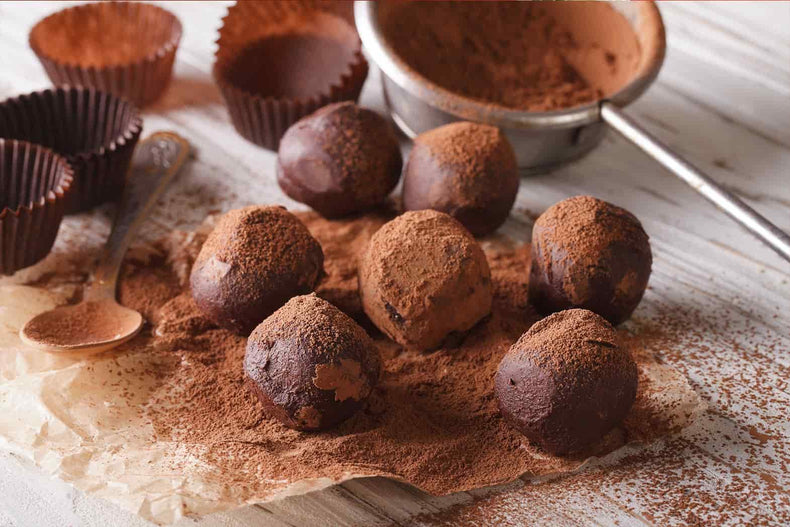
How is chocolate made?
To begin with, the cocoa pod is harvested, cut open, and the cocoa beans are removed. The pods and pulp are then left to ferment for up to 7 days.
After this, the beans are spread out into a single layer to dry out. This prevents mould developing when the beans are transported across the world.
When the beans arrive with the maker or manufacturer, they are roasted. The roasted cocoa beans have a thin shell around them, and to remove this, the beans are cracked open. This process is called winnowing. This leaves behind the pure cocoa bean, also known as the nib.
The cocoa nibs are then ground to a paste, which is known as cocoa mass (or chocolate liquor). A hydraulic press is used to extract cocoa butter from the cocoa mass. After that process, the maker is left with cocoa solids – the combination of dry cocoa solids and cocoa butter.
Once you understand this process, it’s easier to understand how white, milk and dark chocolate bars differ.
What is the best chocolate to cook with?
When cooking with chocolate, you want to use the highest quality product possible. It’s often said that you should use at least 70% cocoa chocolate in your baking, but cooking chocolate ranges in percentage. The lower the percentage, the sweeter your bake will be.
The key difference between ‘cooking chocolate’ and what we’d call ‘eating chocolate’ is the sweetness. Cooking chocolate usually contains less sugar. We tend to use Valrhona Chocolate for chocolate work - as one of the world's leading producers of gastronomic chocolate, this is the preferred choice for high-end restaurants, confectioners and patisserie schools.
When cooking with chocolate, you need to be particularly careful when it comes to melting it. An easy method is to set a bowl above a pan of simmering water, then let the heat slowly melt the chocolate. If you’re after a more professional finish, you can temper chocolate to give it a glossy finish. Learn how to temper chocolate with our guide.
How do you cook with chocolate?
You can cook and bake with chocolate in a number of ways:
- As mentioned above, chocolate is easy to melt. You would need melted chocolate to make chocolate icing, or a chocolate mousse.
- To make a glossy chocolate for dipping chocolate truffle before leaving them to set, homemade chocolate bars or even an Easter egg, you may need to temper your chocolate first. Tempering lends a glossy finish and a crisp, audible ‘snap’ to your chocolate.
- When making cookies, simply chop the chocolate into chunks and mix through the dough. These nuggets will gently melt during the baking process, and leave molten pools of chocolate on top of your cookies.
White, milk or dark – which chocolate should I use?
White chocolate contains cocoa solids, however unlike milk and dark chocolate, it is made from cocoa butter, not the dry cocoa mass. The cocoa butter is then combined with milk and sugar.
Milk chocolate is made by combining the dry cocoa solids with cocoa butter and milk, either in powdered or liquid form. Dark chocolate is much more bitter than white and milk, due to its lack of milk solids and higher percentage of dry cocoa solids.
A more recent addition to the chocolate scene is ‘dark milk’. These bars have a higher percentage of dry cocoa solids than normal milk chocolate, but still a little milk for creaminess.
Due to its high sugar content, white chocolate is best used in moderation. Its creamy flavour works wonderfully as a partner for nuts, and it also sits well next to dark chocolate.
White chocolate couverture 'chocolate drops' have 28% cocoa solids, and are used in professional kitchens because they can be heated quickly, easily and consistently. The white chocolate couverture is pre-tempered and, being couverture chocolate, has a 36% fat content. This ensures a quality, glossy product with a nice clean ‘snap’.
Valrhona Ivoire contains a minimum of 35% cocoa butter, which guarantees a creamy texture and helps the chocolate melt and flow in baking. These chocolate chips have a rich mouthfeel and hints of vanilla.
Milk chocolate has a higher cocoa content than white chocolate, but is still quite creamy. Use milk chocolate for homemade truffles, poking into cookies, or stirring through muffins and brownies.
Expect well-rounded cocoa and caramel flavours, with rich, creamy notes. This all-purpose 33.6% cocoa solids milk chocolate can be moulded, drizzled, coated and dipped – the rich flavours work especially well in truffles, cheesecakes, mousses and ice cream.
Dark chocolate is the most bitter of all, and also the most popular choice for cooking and baking. It’s less creamy than its milk and white counterparts (and often doesn’t include milk, making it suitable for vegans) and has a higher cocoa solids content.
Not only does dark chocolate add a more complex flavour profile, its lower sugar and fat content balances against the other fats and sugars that you’ll probably be using in your cooking and baking.
Enjoyably bitter and dark (with minimum 70.4% cocoa solids), this all-purpose chocolate can be used in ganaches, sauces, ice creams, pralines and precise chocolate work – such as moulding hollow figures, and intricate decorating.
The Valrhona Guanaja chips' minimum 70% cocoa solids boast rich fruit, coffee and molasses notes, which add complexity to your baking and chocolate work. This pack comes in two available sizes, making it easy to use for both home and professional baking.
Valrhona Caraibe dark chocolate chips are balanced and velvety, with notes of almond and roasted coffee – perfect for using in baking. The moulded chocolate chips come in a bean shape and are easy to weigh and quick to melt.
The best chocolate baking recipes
Dark Chocolate Ice Cream Petits Fours Recipe
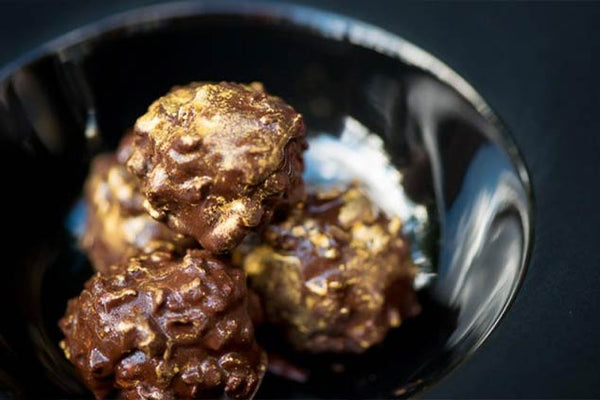
We’ve put a twist on petits fours by scooping homemade chocolate ice cream into balls and then dipping them in chocolate cocoa nibs. Using dark chocolate and cocoa powder gives a richness to the ice cream, while cocoa nibs add a welcome crunch. Try the full recipe here.
Raspberry Chocolate Hearts Recipe
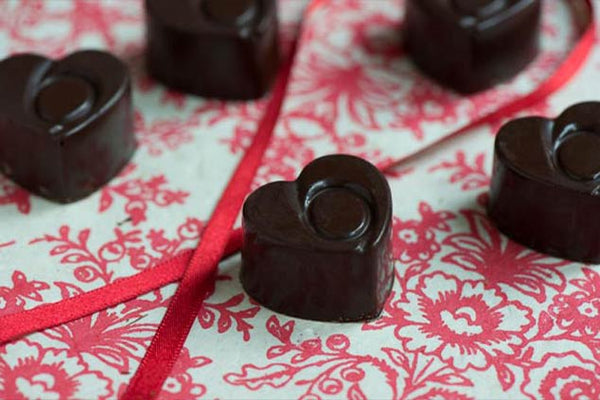
This three-ingredient recipe uses dark chocolate in both the raspberry ganache and the chocolate shells. Dark chocolate balances sweet, tart raspberry powder for a sophisticated after-dinner treat.
Chocolate And Passion Fruit Popping Candy Tart Recipe
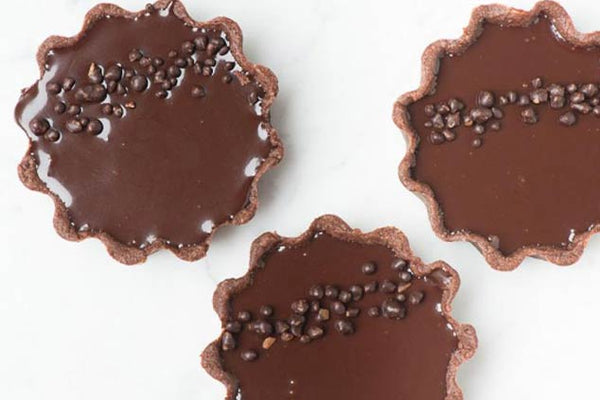
Popping candy adds a burst of fun to these individual tarts. Cocoa powder lends richness to the pastry, while a dark chocolate ganache layer makes for an indulgent topping. Try out the recipe here!
Vegan Chilli & Chocolate Cake Recipe
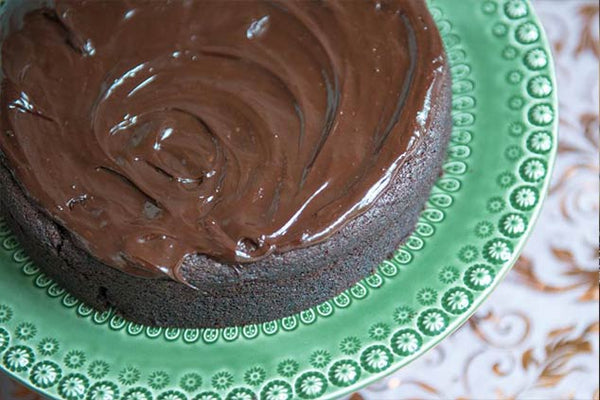 This naturally vegan cake is super moist, thanks to all that dark chocolate and good-quality cocoa powder. Adding three types of chilli powder to the mix gives this cake warm and fruity notes. Click here for full recipe.
This naturally vegan cake is super moist, thanks to all that dark chocolate and good-quality cocoa powder. Adding three types of chilli powder to the mix gives this cake warm and fruity notes. Click here for full recipe.
Rose-Infused Chocolate Truffle Recipe
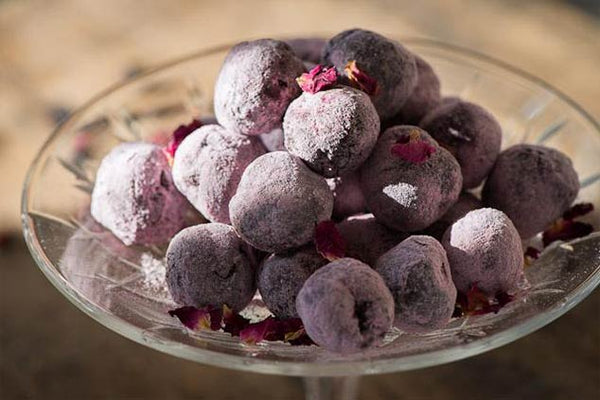 Turn dark chocolate and cream into an indulgent ganache, then infuse with rose petals for a delicate, floral flavour. The rose petals also lend a subtle pink hue to these individual truffles. The full recipe is available here.
Turn dark chocolate and cream into an indulgent ganache, then infuse with rose petals for a delicate, floral flavour. The rose petals also lend a subtle pink hue to these individual truffles. The full recipe is available here.
Panca Chilli Chocolate Pots Recipe
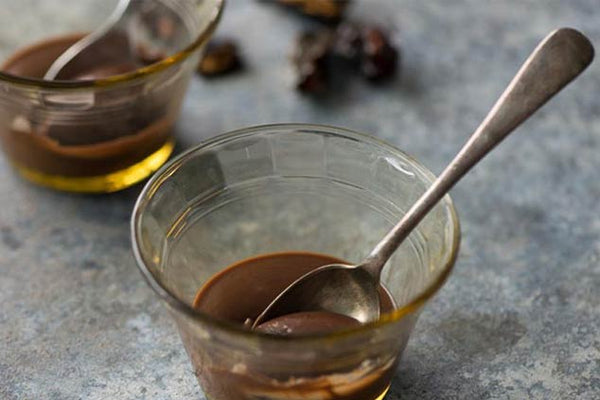
We’ve paired Panca chilli with dark chocolate in this delicious recipe to put a sweet and smoky spin on a classic chocolate dessert.
Rose, Pistachio And White Chocolate Shortbread Biscuits Recipe
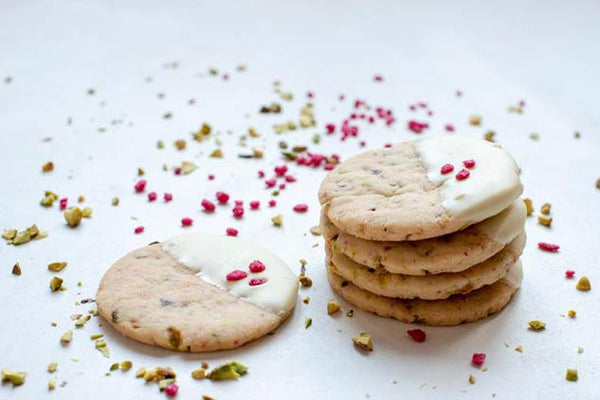
Buttery, floral and nutty, these shortbreads look beautiful half-dipped in sweet and creamy white chocolate. Try for yourself here!
Dark Chocolate And Bergamot Muffin Recipe
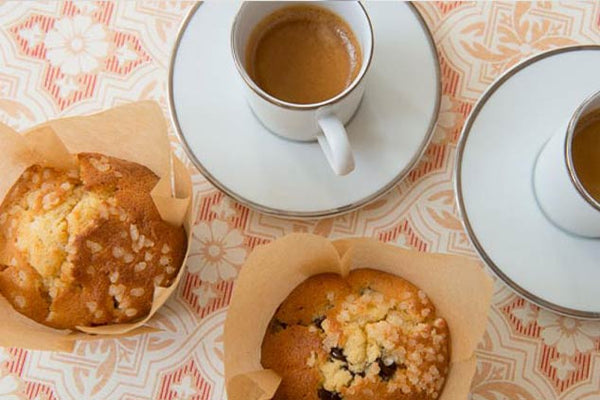
Make a batch of individual muffins for your morning snack. Here, sweet sponge is offset by bitter citrus bergamot notes, and 70% dark chocolate. Full recipe available here.
Make Your Own Chocolate Easter Egg Recipe
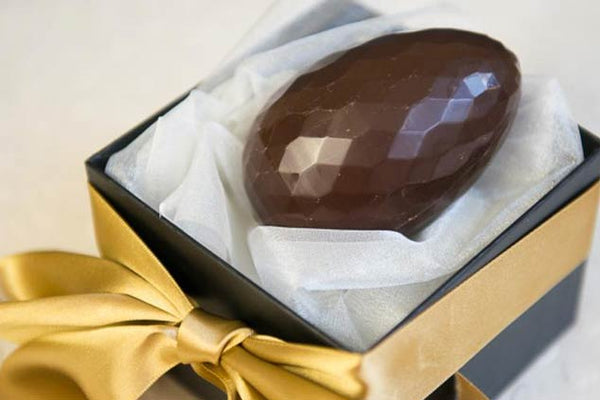
Impress at Easter time by making your own chocolate egg. Our step-by-step guide takes you through the entire process, from choosing the chocolate to tempering it and creating your own fancy pattern.
Raspberry Chocolate Croquettes Recipe
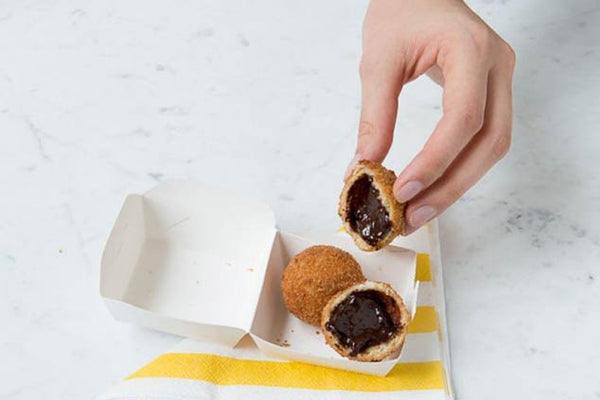
A sweet spin on croquettes, this recipe fills a deep-fried almond and breadcrumb shell with a tangy raspberry and dark chocolate ganache. These moreish bites would be perfect as a fun party canapé.
Will Torrent's Salted Caramel And Chocolate Tart Recipe
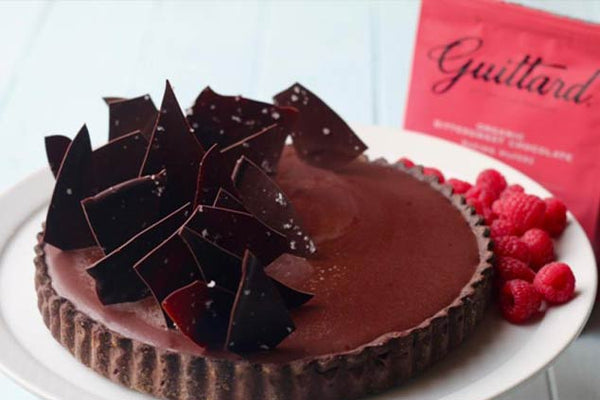
Sea salt, caramel and chocolate were meant to be. Here, sweet and salty flavours combine to make a truly indulgent tart, with striking shards of chocolate on top.
Matcha Green Tea & Chocolate Cookies Recipe
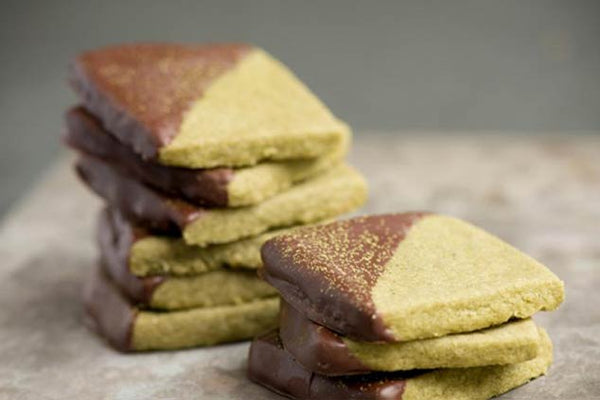
Matcha green tea powder gives a dusky, sweet vegetal flavour to these cookies. Try dipping this Japanese-inspired bake in dark chocolate for bitter notes, or white chocolate for a creamier finish. Full recipe available here.

About the author
Ellie Edwards is a food writer for Sous Chef. Previously she worked at olive magazine, writing about exciting new ingredients, UK restaurants and travelling the world to find the best cinnamon buns. When she's not exploring the likes of Belize, Kerala and Zanzibar, Ellie loves rustling up a feast in her London kitchen, with a particular passion for porridge, sourdough and negronis.








